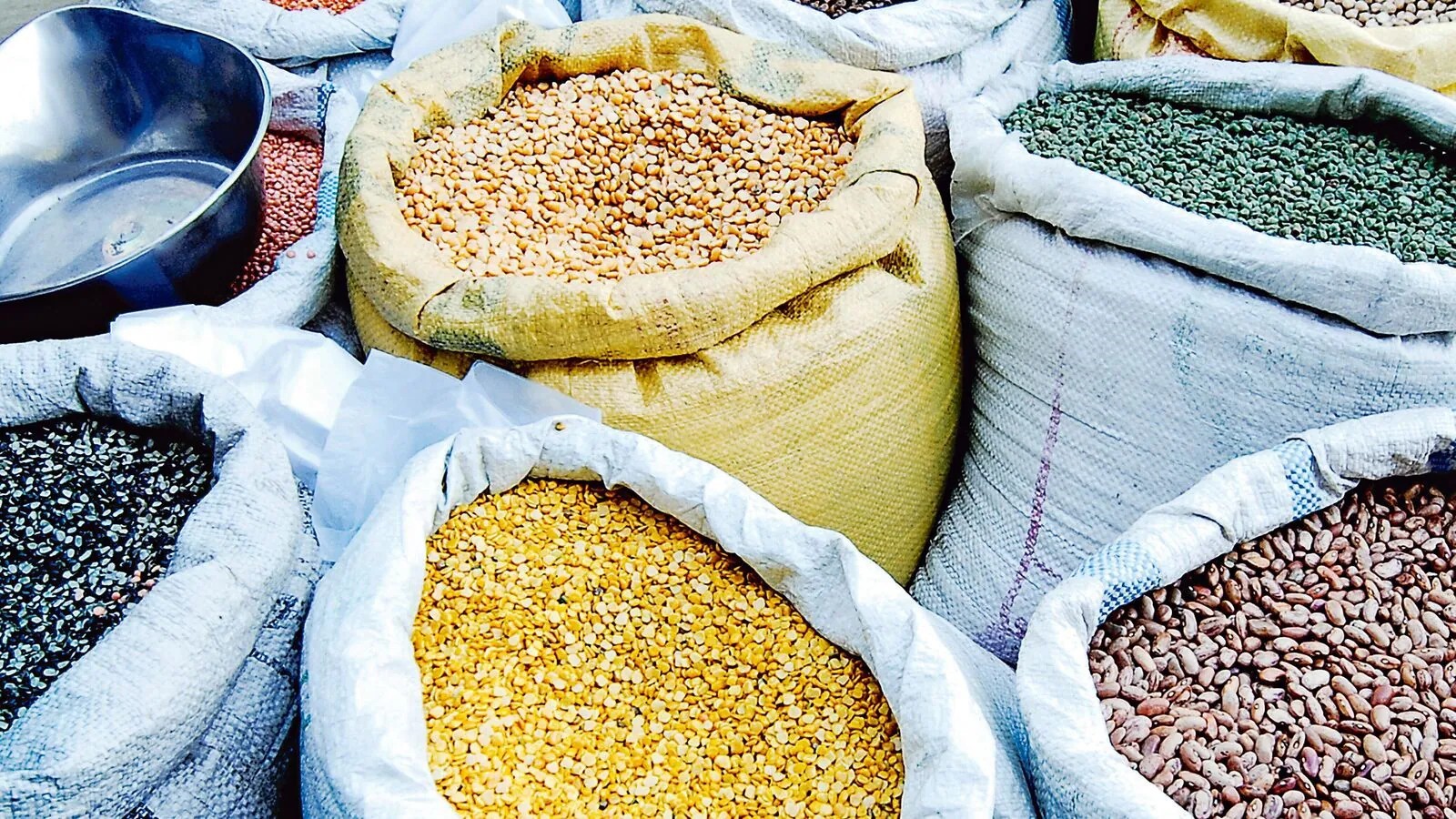India’s Mission for Self-Reliance in Pulses
Syllabus:
GS-3:
Buffer Stocks & Food Security, Direct & Indirect Farm Subsidies
Focus:
- The 2024-25 Union Budget launched a six-year Mission for Self-Reliance in Pulses with a focus on tur/arhar (pigeon pea), urad (black gram), and masoor (red lentil).
- The government has allocated Rs 1,000 crore towards this scheme to promote MSP-based procurement and strengthen post-harvest warehousing solutions.
- This initiative comes at a time when India’s pulses imports are set to hit a record high.
Understanding Mission for Aatmanirbharta in Pulses:
Budget Allocation & Objectives:
- Budget Allocation: ₹1,000 crore allocated in the 2024-25 Union Budget.
- Objectives:
- Achieve self-reliance in pulses production by 2029.
- Provide MSP-based procurement and post-harvest warehousing solutions.
- Reduce dependence on imports of pulses.
- Focus on crops like tur/arhar (pigeon pea), urad (black gram), and masoor (red lentil).
Key Features of the Mission:
- MSP-Based Procurement:
- Implemented by NAFED and NCCF to procure pulses from registered farmers.
- Aims to ensure fair prices for farmers and stabilize market prices.
- Post-Harvest Warehousing:
- Emphasis on reducing post-harvest losses and improving storage infrastructure.
Targeted Crops:
- Tur/Arhar (Pigeon Pea):
- Traditional crop duration: 250-270 days, now reduced to 150-180 days.
- Yields reduced from 20 quintals/hectare to 15-16 quintals/hectare.
- Urad (Black Gram):
- Warm and humid conditions, grown primarily during the kharif season.
- Requires 600-1000mm rainfall annually.
- Masoor (Red Lentil):
- Thrives in cold climates, tolerates frost, and needs 18-30°C during growth.
- Rich in protein, iron, and fiber, making it highly nutritious.
Measures Taken by the Government:
- National Food Security Mission (NFSM): Focus on expanding areas and enhancing productivity.
- ICAR Research: Development of high-yield varieties in collaboration with state agricultural universities.
- PM-AASHA Scheme: Ensures MSP for pulses through Price Support Scheme (PSS) and other mechanisms.
- ISOPOM Scheme: Launched in 14 major pulse-growing states to boost production.
- Rashtriya Krishi Vikas Yojana: Supports state-specific pulse development programs.
Need for the Mission:
Import Surge and Reversal of Aatmanirbharta
- India’s pulses imports during April-November 2024 were valued at $3.28 billion, a 63% increase compared to 2023.
- Import volumes are projected to reach $5.9 billion by the fiscal year-end, surpassing the previous high of $4.24 billion in 2016-17.
- India had achieved near aatmanirbharta (self-reliance) between 2018-2023, with declining imports and increased domestic production.
Production Success Stories
- Domestic pulses production rose from 55 lakh tonnes (lt) in 2013-14 to 273.02 lt in 2021-22, primarily due to success with chana (chickpea) and moong (green gram).
- Adoption of short-duration crop varieties played a key role in this success.
Key Features of the Mission:
Focus Areas
- The mission will prioritize three key pulses: tur/arhar, urad, and masoor.
- Agencies such as NAFED and NCCF will procure pulses directly from farmers.
Post-Harvest Support
- The scheme includes provisions for warehousing solutions to stabilize prices and reduce post-harvest losses.
Challenges to Achieving Self-Reliance in Pulses:
Crop-Specific Challenges
- Tur/arhar: Traditional varieties require 250-270 days for maturity, with yields around 20 quintals per hectare.
- Breeding advancements have reduced crop duration to 150-180 days, but yields remain low at 15-16 quintals per hectare.
- Cultivation is limited to rainfed regions like Maharashtra and Karnataka.
- Need for Hybrid Varieties: Development of short-duration hybrids with higher yields (18-20 quintals/hectare) is essential.
Policy Ambiguity
- Despite promoting pulses cultivation, the government’s decision to allow duty-free imports until March 2026 sends mixed signals to farmers.
- Import duties on pulses, except moong and large kabuli chana, have been removed, discouraging domestic cultivation.
Way Forward:
Technological Innovations
- Investment in breeding programs to develop high-yielding, drought-resistant varieties of tur/arhar, urad, and masoor.
- Adoption of mechanized harvesting techniques to reduce labor costs and improve efficiency.
Policy Reforms
- Gradual restoration of import duties to protect domestic farmers from cheap imports.
- Offering incentives to farmers for cultivating pulses as part of crop diversification.
Market Support
- Strengthening MSP procurement mechanisms to ensure fair prices for farmers.
- Expanding storage infrastructure to reduce post-harvest losses and stabilize market prices.
International Collaboration
- Exploring bilateral agreements with countries like Mozambique, Tanzania, and Canada for secure and sustainable pulse imports when necessary.
Farmer Awareness Programs
- Conducting awareness campaigns on the benefits of short-duration pulse varieties and government procurement schemes.
Conclusion:
India’s mission for self-reliance in pulses is a timely move amid rising imports. Addressing policy ambiguities, investing in hybrid seeds, and enhancing market support are crucial to achieving sustainable growth and ensuring food security.
Source: TH
Mains Practice Question:
Evaluate the effectiveness of India’s renewed Mission for Self-Reliance in Pulses. Discuss the challenges related to crop yields, policy ambiguities, and market dynamics, suggesting strategies to achieve sustainable growth in pulses production and reduce import dependency.




